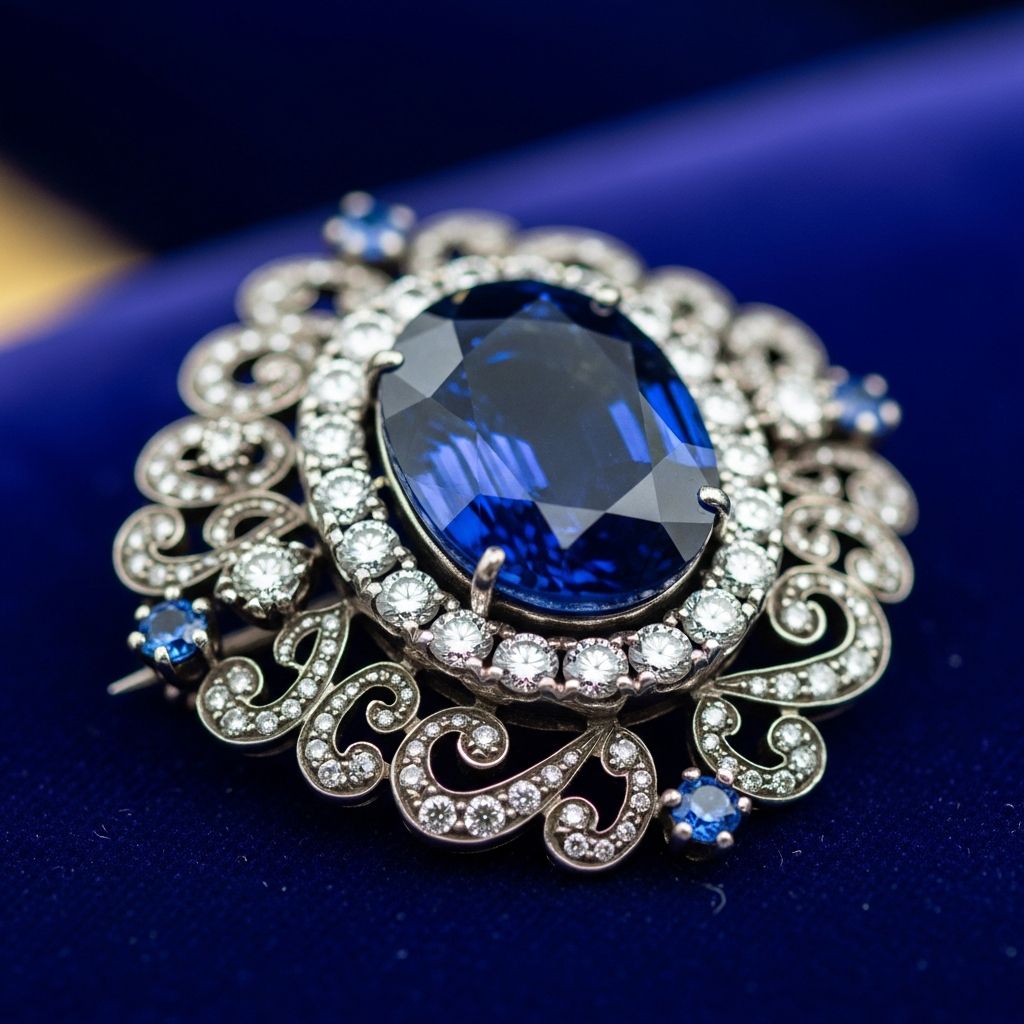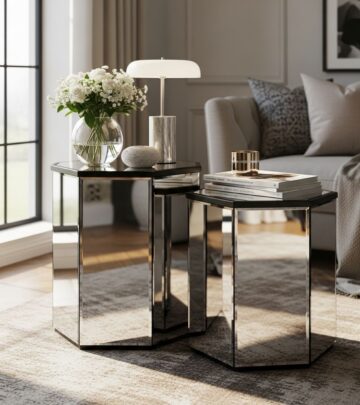Princess Anne’s Sapphire Brooch: Royal History, Romance, and Replication
Discover the storied legacy behind Princess Anne’s sapphire brooch and its link to royal romance, tradition, and enduring style.

Princess Anne’s Sapphire Brooch: A Royal Icon of Romance and Legacy
Royal jewels are more than mere accessories—they are steeped in history, tradition, and sentimentality. Among the British royal family’s magnificent collection, Princess Anne’s sapphire brooch stands out not just for its dazzling appearance but for its extraordinary backstory, entwined with romance and replication. This article unfolds the tale of Princess Anne’s brooch, tracing its lineage, symbolism, and continuing influence within royal circles.
The Origin: Prince Albert’s Romantic Gift to Queen Victoria
At the heart of Princess Anne’s sapphire brooch is a story born of love. The original brooch traces back to 1840, when Prince Albert presented Queen Victoria with a spectacular wedding gift on the eve of their nuptials. According to Queen Victoria’s own diary, Albert gave her “a splendid brooch, a large sapphire set round with diamonds, which is really quite beautiful”.
- Design: A large oblong sapphire surrounded by twelve round diamonds, set in gold.
- Sentimental value: Victoria cherished the brooch, wearing it not only on her wedding day but throughout her reign.
- Status: The brooch was safeguarded as an “heirloom of the crown,” reserved for queens regnant and consorts, and was worn by successive queens including Alexandra, Mary, Elizabeth, and Elizabeth II.
The original brooch became symbolic of enduring love—an object of royal affection and tradition passed from one monarch to the next.
The Art of Replication: Copies for Royal Daughters
The appeal and sentimental weight of the original brooch led to an extraordinary tradition of replication. Prince Albert, understanding the emotional importance, purportedly commissioned copies of the sapphire brooch for his daughters.
- Suzy Menkes, a prominent royal jewelry author, states that “Prince Albert made copies of the brooch for his own daughters, and the Queen has given one of these to the Princess Royal.”
- Leslie Field notes that while the original piece is reserved as Crown property, similar brooches were worn by other royal women, including Princess Anne and Queen Elizabeth the Queen Mother.
This act established an intriguing precedent—the brooch as both a symbol of royal unbroken lineage and a personal memento of family bonds.
Princess Anne’s Brooch: A Modern Royal Heirloom
Princess Anne’s own version of the sapphire brooch first emerged in the 1980s, believed to be a gift from Queen Elizabeth II and the Duke of Edinburgh, possibly to mark Anne’s 30th birthday. Its remarkable resemblance to the historic piece immediately attracted attention from both royal watchers and jewelry experts.
- Physical Description: A large central sapphire encircled by twelve brilliant diamonds, closely modeled on the original Prince Albert brooch.
- Material Origin: Fine jewelry experts speculate that the sapphire’s vivid color and clarity suggest origins in Burma (now Myanmar), renowned for exemplary gemstones.
While exact details on the acquisition are debated, with some sources claiming Queen Elizabeth II purchased the brooch for Princess Anne from the antique market, the prevailing narrative emphasizes its symbolic value as part of the royal tradition.
Significance in Princess Anne’s Life and Royal Duties
Princess Anne, known for her diligent royal engagements and understated elegance, often chooses the sapphire brooch for high-profile appearances. As patron of Team GB and a former Olympian herself, she has worn the brooch during key events, further cementing its legacy in contemporary royal imagery.
- Occasions Noted: The brooch has adorned Anne’s outfits at milestone birthdays, official celebrations, and commemorations, paired at times with another royal jewel—the Empress Maria Feodorovna’s Sapphire Choker.
- Style Influence: Its enduring presence reinforces a motif of continuity, linking Anne’s public persona to her royal ancestry.
Table: Key Appearances of Princess Anne’s Sapphire Brooch
| Year | Event | Outfit |
|---|---|---|
| 1980s | First public appearance of the brooch | Classic tailored suits |
| 2000 | 50th Birthday celebration | Formal evening wear |
| 2025 | Household Division Musical Spectacular | Long-sleeved royal blue wrap dress |
| N/A | Multiple official ceremonies honoring British Olympians/Paralympians | Daytime and formal attire |
Tradition, Protocol, and Engagement Ring Choices
Princess Anne’s affinity with sapphires goes beyond her brooch. Both of her engagement rings—marking marriages to Mark Phillips and Timothy Laurence—feature prominent blue sapphires.
- Breaking protocol: While the choice of sapphire has become widespread due to Princess Diana’s iconic engagement ring (later worn by Catherine, Princess of Wales), Anne’s twin use of the gemstone was pioneering in royal circles.
- Symbolism: The consistent selection of sapphire for her engagement rings and brooches points to a personal and historic resonance.
Craftsmanship and Jeweler: Garrard’s Royal History
The lineage of royal sapphire jewels is closely intertwined with Garrard, the crown jeweller responsible for the design and production of the original Prince Albert sapphire brooch.
- Garrard’s legacy: The jeweller was commissioned directly by Prince Albert and has since created numerous pieces for the royal family, including sapphire brooches for Princess Anne and other descendants.
- Design consistency: The cluster setting—one large colored stone encircled by diamonds—is now a signature motif in royal jewelry and beyond.
The Replica: Myths, Clarifications, and Value
Despite frequent confusion in the public eye, Princess Anne’s sapphire brooch is a replica, not the original heirloom reserved for queens. The resemblance, both in materials and craftsmanship, is so striking that watchers often mistake it for the authentic Crown property.
- Gift from Queen Elizabeth II: Anne’s brooch is believed to have been a gift from her mother, symbolizing not only royal tradition but personal affection.
- Heirloom ambiguity: Some sources speculate that the brooch may have been acquired from the antique market by Queen Elizabeth II and subsequently given to Anne.
- Sentimental worth: Its history and personal connections render it invaluable—regardless of whether it is technically an original or a carefully crafted duplicate.
Royal Sapphire Brooches: Shared Motifs, Evolving Traditions
Sapphires have become closely associated with British royal jewelry, symbolizing fidelity, wisdom, and resilience. Princess Anne’s brooch is not the only piece to echo this motif:
- Queen Elizabeth II’s sapphire brooches, worn at state and ceremonial occasions.
- Queen Elizabeth the Queen Mother’s similar sapphire brooch, said to have Romanov origins.
- Modern engagement rings, notably those worn by Princess Diana and Catherine, Princess of Wales.
The consistency of sapphire use signifies continuity—a tribute to history and a reflection of personal preference.
How Princess Anne Styles the Brooch
Princess Anne is renowned for her practical approach to fashion. Her sapphire brooch is often seen paired with classic tailoring or formal evening wear:
- Accentuates navy, royal blue, or neutral-toned outfits.
- Pinned to lapels, dresses, and coats, ensuring the jewel remains a central visual element.
- Sometimes worn alongside the Empress Maria Feodorovna’s Sapphire Choker to reinforce her personal style and royal heritage.
FAQs: Princess Anne’s Sapphire Brooch
Q: Is Princess Anne’s brooch the original Prince Albert brooch?
A: No, Princess Anne’s brooch is a replica inspired by the original brooch gifted to Queen Victoria by Prince Albert in 1840.
Q: Who made Princess Anne’s sapphire brooch?
A: While exact origins are debated, the original Prince Albert brooch was crafted by Garrard & Co; the replica is believed to have been commissioned or acquired by Queen Elizabeth II as a gift for Anne.
Q: Why do royal women favor sapphire brooches?
A: Sapphires symbolize loyalty, wisdom, and resilience, making them enduringly popular in royal jewelry; many brooches and engagement rings in the royal collection feature the stone.
Q: When does Princess Anne wear her sapphire brooch?
A: She wears it for both formal and daytime occasions—milestone celebrations, royal engagements, and ceremonies honoring significant achievements.
Q: Does Princess Anne’s brooch hold any special meaning for her?
A: The brooch symbolizes familial ties and dedication to royal tradition, linking Anne to her ancestors and reflecting her personal preference for sapphires in jewelry.
Conclusion: A Jewel Bridging Past and Present
Princess Anne’s sapphire brooch is much more than a fashionable accessory—it is a bridge between royal history and modern tradition. Inspired by the love story of Queen Victoria and Prince Albert, replicated for subsequent generations, and selected by Princess Anne for cherished occasions, the brooch is a potent symbol of continuity, elegance, and sentimentality. As styles and circumstances shift, its place in royal legacy remains unshaken, ensuring that romance and history sparkle anew for generations to come.
References
- https://www.womanandhome.com/life/royal-news/princess-annes-sapphire-brooch-said-to-be-inspired-by-one-of-the-royal-familys-most-romantic-stories/
- https://www.thecourtjeweller.com/2021/09/princess-annes-sapphire-cluster-brooch.html
- https://crisscut.stevenstone.co.uk/royals/princess-annes-brooch-isnt-what-it-seems-its-a-replica-of-a-royal-icon/
- https://royalwatcherblog.com/2020/08/11/princess-annes-sapphire-brooch/
- https://garrard.com/us/jewellery-of-the-royal-family-a-garrard-history/












